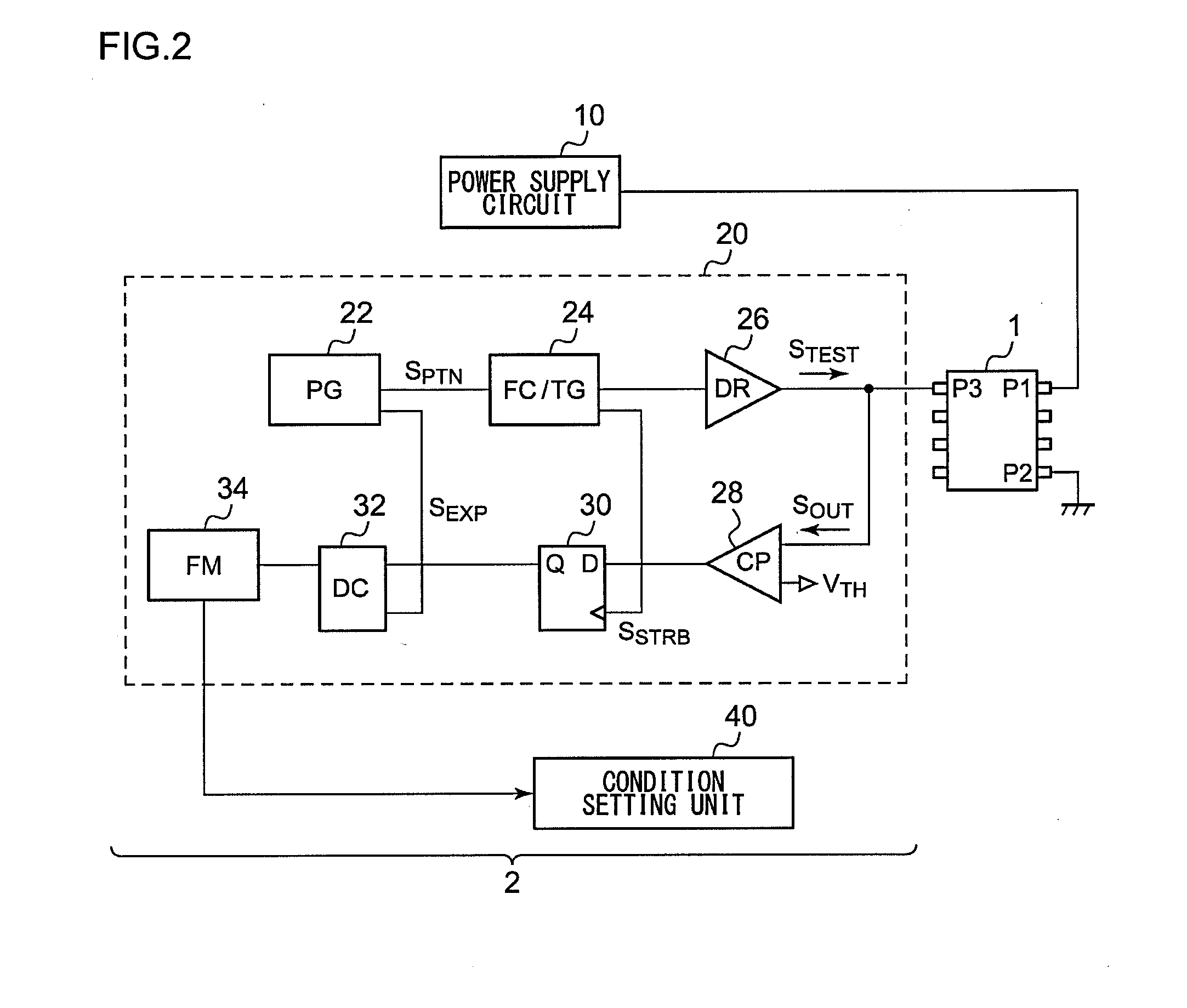Test apparatus
a test apparatus and test tube technology, applied in the direction of testing circuits, semiconductor/solid-state device testing/measurement, instruments, etc., can solve the problem of not negligible output impedance of circuits, and achieve the effect of reducing divergence in test results
- Summary
- Abstract
- Description
- Claims
- Application Information
AI Technical Summary
Benefits of technology
Problems solved by technology
Method used
Image
Examples
first modification
[First Modification]
[0090]Description has been made in the embodiment regarding an arrangement in which the lower limit value of the power supply voltage is employed as the first characteristic value and the second characteristic value. However, the present invention is not restricted to such an arrangement.
[0091]With the first modification, as the first characteristic value, the propagation delay τUSR of a predetermined path (e.g., the critical path) in the DUT 1 in the user environment is employed. Furthermore, as the second characteristic value, the lower limit value VDD,MIN—ATE of the power supply signal in the tester environment is employed.
[0092]The measurement method for the propagation delay τUSR is not restricted in particular. For example, the propagation delay may be measured according to the following procedure.
[0093]That is to say, the quality of the DUT 1 is judged for each operation frequency while sweeping the operation frequency of the DUT 1. With such a test, the u...
second modification
[Second Modification]
[0097]With the second modification, as the first device characteristic value and the second device characteristic value, the upper limit of the operation frequency that allows the DUT 1 to operate normally when a rated power supply signal is supplied to the DUT 1 is employed.
[0098]In this case, the spec value XSPEC is determined based on the rated operation frequency of the DUT 1. For example, in a case in which the DUT 1 is configured as a device guaranteed to operate at 1 GHz, the spec value XSPEC is determined to be 1 GHz.
[0099]FIG. 9 is a diagram showing the relation between the first device characteristic value fMAX—USR and the second device characteristic value fMAX—ATE according to the second modification. With the first device characteristic value fMAX—USR as x and with the second device characteristic value fMAX—ATE as y, when the relation y=f(x) holds true, the condition setting unit 40 sets the operation frequency of the DUT 1 to be used in the main t...
third modification
[Third Modification]
[0100]As the first device characteristic value, the lower limit value VDD,MIN—USR of the power supply signal that allows the DUT 1 to operate normally when the DUT 1 is operated at a rated operation frequency is employed. Furthermore, as the second device characteristic value, the upper limit value fMAX—ATE of the operation frequency that allows the DUT 1 to operate normally when a rated power supply signal is supplied to the DUT 1 is employed. The spec value XSPEC is determined based on the rated value of the power supply signal. With the first device characteristic value VDD,MIN—USR as x and with the second device characteristic value fMAX—ATE as y, when the relation y=f(x) holds true, the condition setting unit 40 sets the operation frequency, at which the DUT 1 is operated in the main test, to yATE=f(XSPEC).
[0101]Such a modification also reduces divergence in the test results.
PUM
 Login to View More
Login to View More Abstract
Description
Claims
Application Information
 Login to View More
Login to View More - R&D
- Intellectual Property
- Life Sciences
- Materials
- Tech Scout
- Unparalleled Data Quality
- Higher Quality Content
- 60% Fewer Hallucinations
Browse by: Latest US Patents, China's latest patents, Technical Efficacy Thesaurus, Application Domain, Technology Topic, Popular Technical Reports.
© 2025 PatSnap. All rights reserved.Legal|Privacy policy|Modern Slavery Act Transparency Statement|Sitemap|About US| Contact US: help@patsnap.com



